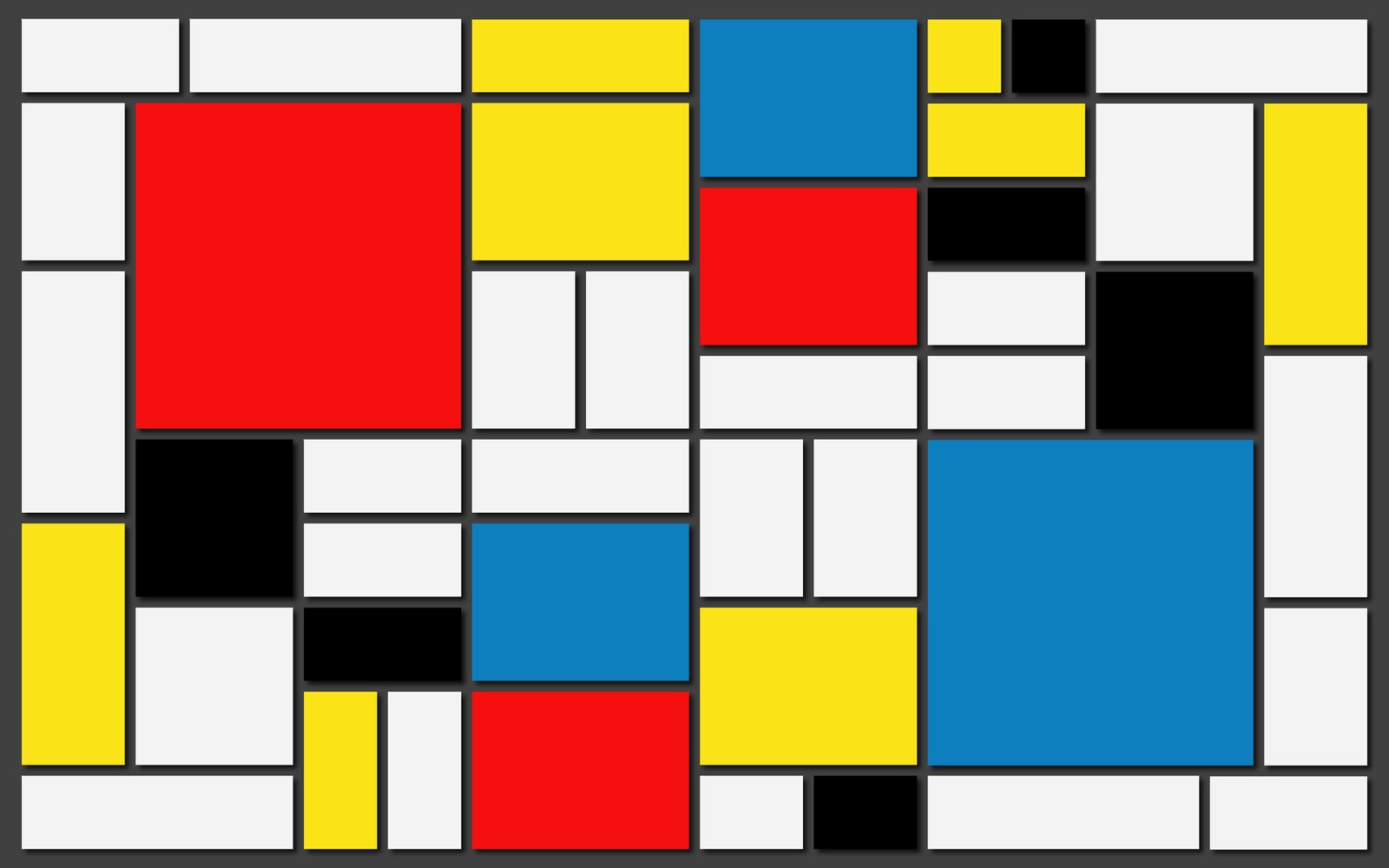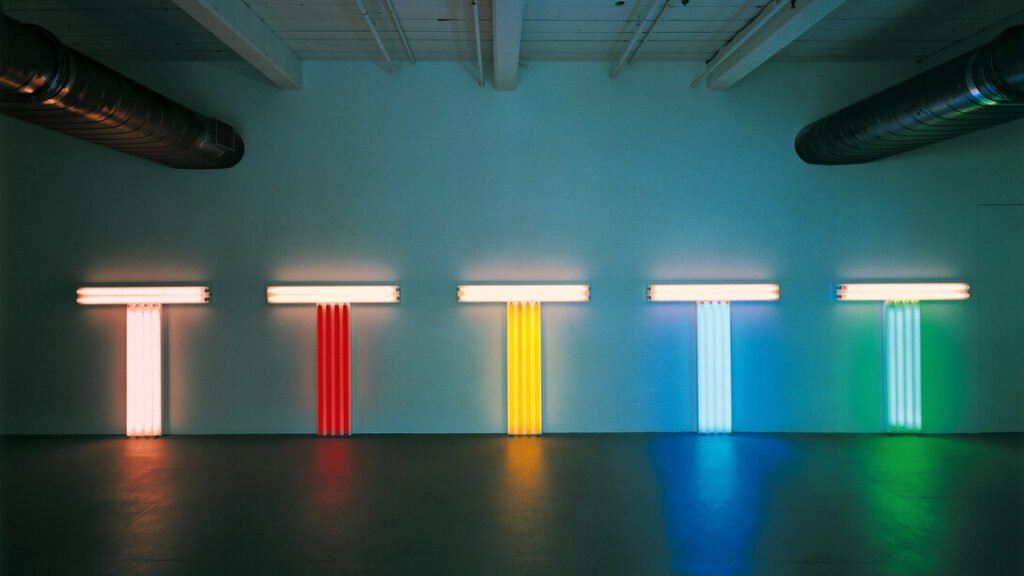Imagine the historic moment when lighting design became visual art—no more need for canvas, brush, or even pigment. A simple fluorescent tube mounted on a wall could transform an entire space into a work of art. The first reaction? “Is this art?” But stand in front of that light for a few minutes, and something happens. The space shifts, the atmosphere changes, and you realize you’re witnessing something revolutionary.
That’s what Dan Flavin did in the 1960s—he proved that lighting design could be pure art, without compromise. And when you look at these installations today, you discover surprising connections with a painter who, decades earlier, dreamed of art breaking out of the frame and transforming real space.
When the Brush No Longer Reaches – Mondrian’s Dream
Piet Mondrian had an obsession: art must be as simple as possible in order to be as powerful as possible. Instead of complex landscapes or realistic portraits, he chose to paint only perpendicular black lines and a few squares of red, yellow, or blue. Sounds simple, right? But these seemingly elementary compositions had an incredible visual force.

Mondrian wasn’t just making decorations—he was searching for a universal formula of beauty. Every line, every color was placed exactly where it needed to be in order to create perfect balance. He was like a designer trying to build a harmonious interface—nothing extra, nothing missing, everything in its place.
But Mondrian’s dream was for his art to escape the picture frame and transform entire homes, streets, cities. His Paris apartment was arranged like a three-dimensional painting, with white walls and colored bands continuing the compositions from his canvases. He felt the brush and canvas were limiting—he dreamed of an art that could directly shape the space we live in.
When Light Replaces the Brush – Flavin’s Revolution
Dan Flavin belonged to the American minimalism of the 1960s, an artistic movement developed alongside Donald Judd and Carl Andre. When, in 1963, he mounted his first diagonal fluorescent tube on a wall, Flavin was exploring a new artistic territory—without seeking any direct connection to Mondrian.
But that moment was historic: for the first time in the history of art, lighting design became an independent visual art form. Even without direct influence, Flavin was realizing the dream Mondrian once had—art was breaking out of the frame and transforming real space.

His first work—icon—was a straight line of light. Mondrian’s grid seemed to have stepped off the canvas and become pure energy in space. Flavin’s pink, green, and blue tubes didn’t just light up the space—they completely transformed it. Walls took on new colors, angles shifted, and the atmosphere became entirely different.
Flavin turned every room into a giant painting you could walk through. Light became the perfect artistic material—it didn’t need a surface, it spread through space, altering its colors and proportions.

The Unintentional Dialogue Between Eras
What makes this connection so fascinating is that it wasn’t planned. Two artists, in different eras and contexts, arrived at the same conclusion: simple forms, applied with absolute precision, have the power to completely transform the perception of space.
Mondrian dreamed of a total art that would escape museums and reshape the urban environment. Flavin, unaware of this dream, brought it to life using means the Dutch artist could never have imagined. Industrial, mass-produced light became the perfect material for art that transforms real space.
Both used the simplest elements with absolute precision. Mondrian with his lines and primary colors; Flavin with standard, unaltered fluorescent tubes—yet arranged with mathematical attention to detail. Every position, every angle, every combination was calculated for maximum impact.
Through Flavin’s works, we come to understand that lighting design has become a fully recognized visual art—just as expressive and conceptual as traditional painting or sculpture.
Lessons for Today’s Designers
This retrospective parallel reveals something fundamental about the evolution of modern art: certain ideas are simply in the air, emerging independently across different artists. The pursuit of pure form, the desire to break free from traditional boundaries, the dream of an art that transforms everyday life—these have crossed decades and found new expressions.
Flavin showed us that light can be sculpted, composed, orchestrated—just like a musical piece or a painting. It becomes a building material for atmosphere, emotion, and experience.
When Art and Design Meet
Looking back at this unintentionally coherent evolution—from Mondrian’s grid to Flavin’s neon—we recognize the historic moment when lighting design became a standalone visual art. No longer just a tool to illuminate painting or sculpture, light itself became a complete artistic medium.
Flavin’s installations prove that you can paint directly in space—without canvas, without brushes, using only light. You can create volume, shape atmospheres, build emotions, all with just a few fluorescent tubes.
For us, today’s professionals, this means total freedom. Light is our new material—just as flexible and expressive as any traditional artistic medium. We simply need to learn to use it with care and creativity.
Light no longer just illuminates—it creates. And in that act of creation, design and art meet perfectly, showing that there are no boundaries between beauty and function when the vision is clear and the execution precise.
